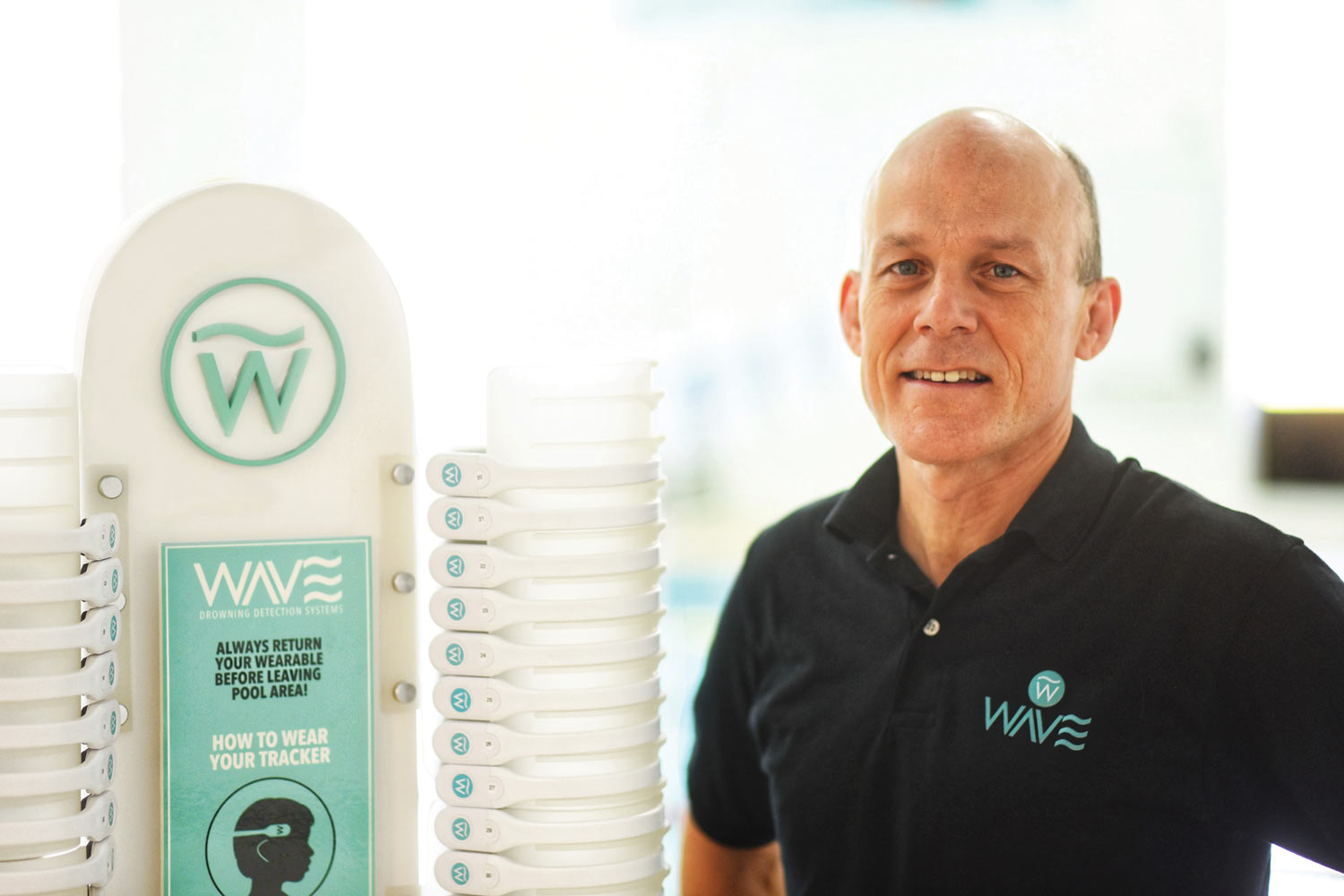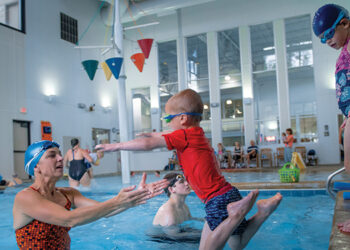WAVE Systems is on a mission to end drowning. A part of that is revolutionizing the job of lifeguards by giving them the tools to intervene long before an incident can turn deadly.
Mark Caron, the CEO and co-founder of WAVE Systems, Inc., has worked on several different technologies over the course of his career. After college, he was employed at GE Aerospace in software development and telecommunications. At the time, telecom was in the midst of switching from analog to digital, and as wireless technology started down that path, he jumped at it. This required a move to rural Virginia where he became a product manager with Ericsson, one of the global leaders in wireless technology.
Being drawn to tech startups, Caron went for an MBA at Harvard Business School to expand his business skill set, then joined a cutting-edge wireless tech startup that soon spun-out Omnipoint Communications. That gave him the chance to create the marketing plan and organization for what is today the T-Mobile network from Virginia to Maine.
From there, Caron helped bring text messaging to the U.S. His startup tied together four different cellular technologies that didn’t support text messaging across networks. With the help of American Idol teaching Americans how to triple-tap messages on their numeric keypads, soon everyone was texting and it was a $20 billion business for the networks. That software is still running and handles roughly five billion messages a day around the world.
While Caron’s background has had a big impact on business and society, none of it saved lives — but WAVE does. “All that wireless experience has proven helpful in building WAVE,” said Caron. “We are using wireless technology in innovative ways. We understand what technology is capable of doing and what it’s not.”
How it All Started
Caron elaborated that while understanding the technology is critical, so is having a great team — something they’ve also accomplished at WAVE. Co-founder Dave Cutler and Caron met through a close mutual friend. “Dave is brilliantly creative, had experience with aquatics safety products and was passionate about using tech to reduce drownings,” said Caron. “Given my background in wireless tech and startups, our skill sets were very complimentary.”
Another catalyst for partnering was the drowning in each of their hometowns, both happening while lifeguards were on duty. “In my town, a teenage boy wandered into the deep end of a pool and didn’t know how to swim,” said Caron. “I saw first-hand how his drowning caused pain and trauma for everyone involved, including two of the teenage lifeguards who were family friends.”
Caron said he learned through Cutler how little had been done to apply technology to prevent drownings, so they partnered to develop an affordable solution that could be easily deployed wherever people swim.
The Proof is in the Feedback
During 2018 and 2019, the WAVE team visited over 100 commercial pools to demonstrate early prototypes and get feedback from aquatics professionals. They said what features and functionality they wanted and needed in a drowning detection system, and WAVE listened.
Caron shared four things that were crystal clear from the feedback:
- It must be easy to implement and use. “WAVE is portable so it doesn’t need to be installed, and swimmers can use it without assistance from lifeguards — freeing them up to focus on their job,” said Caron.
- It must be accurate. Measuring facial submersion is by far the most accurate way to determine if a swimmer is at risk. “If a swimmer’s face is submerged for longer than a preset time, the WAVE wristbands lifeguards wear alert them by vibrating,” said Caron. “If the issue continues the system sounds an alarm.”
- It must be affordable for any pool size.
- The company must have exceptional customer service. “At WAVE, we have an incredibly talented, caring and responsive team,” added Caron. “We’re here to make our customer’s lives better, easier and safer.”
Impact on Lifeguard Recruiting
With a national lifeguard shortage during the pandemic, recruiting and retaining lifeguards is at the top of many recreation centers’ lists. Luckily, this is something WAVE products can help with. One of the biggest selling points is the current demographics of lifeguards — they’re young and they’re technophiles.
“Our customers have told us it’s actually changing the way their lifeguards behave,” said Caron. “They’re more focused and more effective because the system makes their job more interesting. The lifeguards take it as a challenge to spot something wrong before their bracelets go off. As a result, they’re more engaged and more aware of how long people are underwater.”
WAVE also reduces the constant, low-level stress that something terrible might happen at any second — stress which reduces cognitive ability. With WAVE, lifeguards are more engaged, focused and effective.

Parents of potential lifeguards are also more likely to allow them to be lifeguards with the WAVE system because it reduces their liability. In turn, lifeguards feel more valued because they see their employer investing in them through this innovative technology.
“Much of lifeguard training is about emergency response, action plans, rescue skills, CPR, etc., but risk management should be more about incident avoidance versus response,” Caron elaborated. “WAVE enables lifeguards to play offense instead of having to play defense.”
The Future of WAVE
In the context of his extensive career, Caron said he finds his work with WAVE incredibly fulfilling. “In addition to the important mission of the company, I find the innovation process very energizing, and I love the people it attracts,” he said. “They’re very bright, very creative people who get passionate about solving problems and making things better.”
With the overall goal of protecting as many swimmers as possible, affordability and reliability are key components to WAVE. “We will continue to drive down our costs through design and manufacturing improvements,” he said. “And we’ll keep listening to our customers and delivering products that are reliable, easy to deploy and affordable.”
Caron observed that WAVE is similar to other safety technologies that have dramatically reduced accidental deaths. Once technology enables a solution to be cheap enough, reliable enough and unobtrusive enough to trigger a simple change in human behavior — think seatbelts in cars, helmets for biking, etc. — the impact is profound. “We’ve made WAVE inexpensive and proven it’s reliable and unobtrusive,” said Caron. “Now it’s time to broaden its adoption so we can maximize its impact.”
Produced in partnership with WAVE Systems. To learn more or request a demo, email info@wavedds.com, or visit wavedds.com.
Photos by Wilton Portraits.











